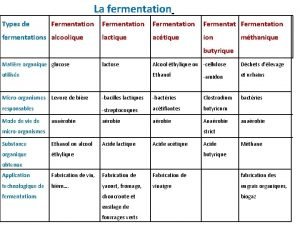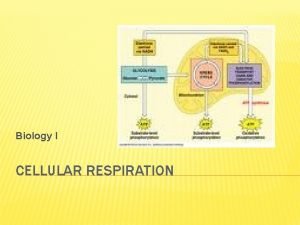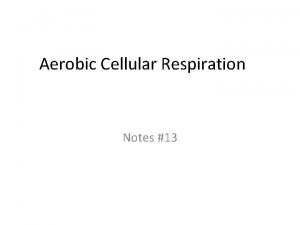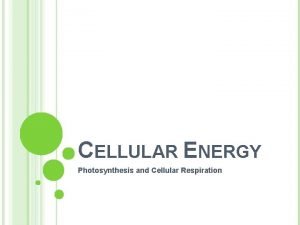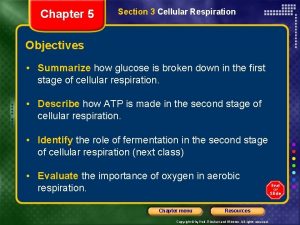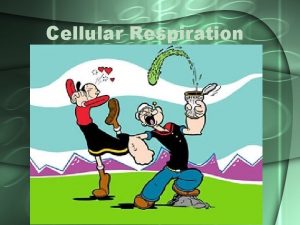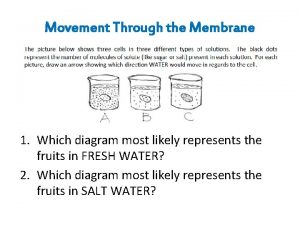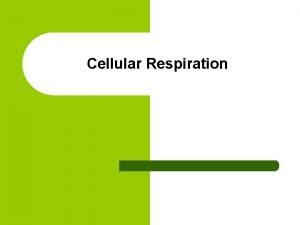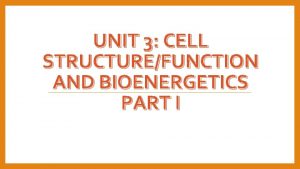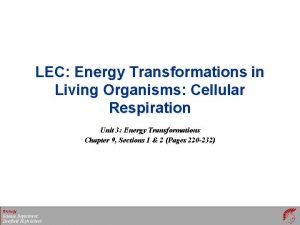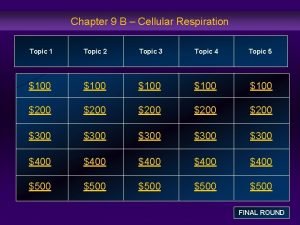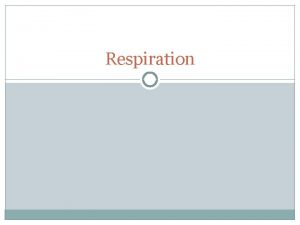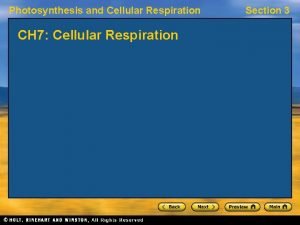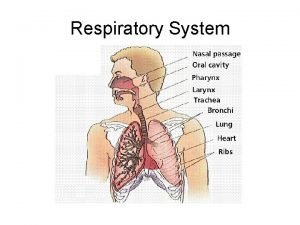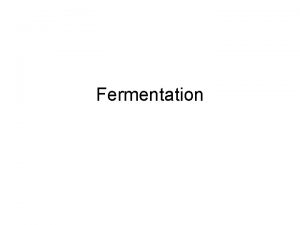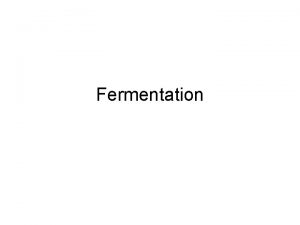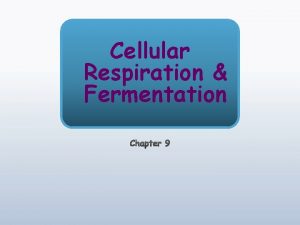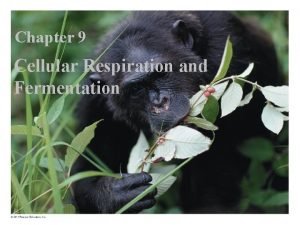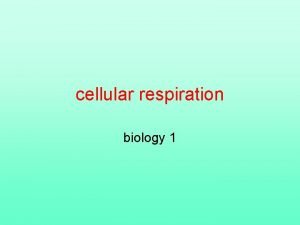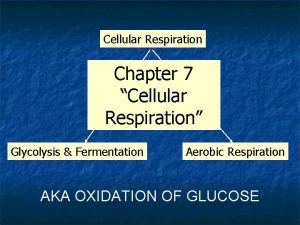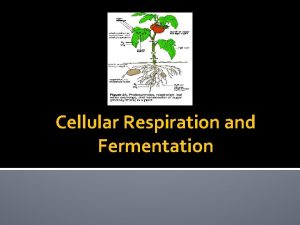photosynthes is fermentation Cellular respiration Cellular processes chemosynthes

















- Slides: 17

photosynthes is fermentation Cellular respiration Cellular processes chemosynthes is Biology Science Department Deerfield High School

Flow of ENERGY through an ecosystem § Producers are autotrophs Energy Pyramid Secondary consumers Primary producers Biology Science Department Deerfield High School or organisms that make their own food § Producers get their energy from the sun or chemicals – Photoautotrophs- use light to make their own food (glucose) known as photosynthesis – Chemoautotrophs- use chemicals (hydrogen sulfide) to make their own food known as chemosynthesis

Photosynthesis-- making food Write the chemical equation for photosynthesis: Predict: what happens to the rate of photosynthesis as the amount of C 02 increases? (light and temperature) What kinds of organisms undergo this process? glucose Where does this occur? Biology Science Department Deerfield High School Show visual concepts of environmental factors influencing photo

Other autotrophs- NO LIGHT § Chemoautotrophs get their energy from chemicals to make their food § They (bacteria/tubeworms ) convert inorganic chemicals (hydrogen sulfide) into glucose or food. § This process is called chemosynthesis. Biology Science Department Deerfield High School https: //divediscover. whoi. edu/hydrothermal-vents/chemosynthesis-2/ http: //www. montereyinstitute. org/noaa/lesson 05. h tml

Biology Science Department Deerfield High School

Energy flow through an ecosystem § Consumers get their energy from producers OR other consumers– Heterotrophs can’t make their own food § BOTH consumers and producers can convert stored chemical energy (glucose) into usable chemical energy (ATP). § This process is called cellular respiration. Examples: ALL LIFE! Biology Science Department Deerfield High School

Aerobic (oxygen available) Cellular Respiration Cellular respiration is the process by which glucose (C 6 H 12 O 6) is broken down to make ATP- ENERGY C 6 H 12 O 6 + 6 O 2 food enzymes oxygen (glucose, a carbohydrate) 6 H 2 O + 6 CO 2 + 38 ATP water carbon dioxide Glucose: plant sugar Biology Science Department Deerfield High School

Site of Cellular Respiration § All cells (except bacteria) contain mitochondria: cell structures that transform chemical energy from glucose to ATP. – Remember bacteria undergo CR but it happens in the cell membrane Biology Science Department Deerfield High School

Bio. Theme: Interdependence! What is the connection? ? Photosynthesis: 6 H 2 O + 6 CO 2 sun C 6 H 12 O 6 + 6 O 2 Aerobic Cellular Respiration: enzymes C 6 H 12 O 6 + 6 O 2 Biology Science Department Deerfield High School 6 H 2 O + 6 CO 2 + energy (ATP)

ATP Biology Science Department Deerfield High School

Compare and contrast: cellular respiration, photosynthesis, and chemosynthesis PHOT CR Chemo O Biology Science Department Deerfield High School

§ What happens when cells don’t have enough oxygen? – Remember: oxygen = ENERGY? § Some organisms live in an oxygen-free environment. § How do they get their energy? Biology Science Department Deerfield High School

Anaerobic (no O 2)Cellular Respiration or FERMENTATION § Some living things need to make energy when 02 is NOT available § Anaerobic respiration is called fermentation – Converts glucose to energy without 02 – Releases less energy (ATP) in comparison to cellular respiration § 2 types of fermentation – alcoholic and lactic acid Biology Science Department Deerfield High School

Alcoholic Fermentation § Anaerobic (NO 02) way of converting SOURCE SUGAR IN ALCOHOLIC FERMETATION glucose into. OF ATP for yeast and bacteria BREAD MAKING: DOUGH (CO 2 MAKES DOUGH RAISE) § C 6 H 12 O 6 ethanol + MAKING: CO 2 + 2 ATP WINE GRAPES BEER MAKING: BARLEY (ADD HOPS FOR FLAVOR) § EX: baking bread with yeast fermenting wine & beer Biology Science Department Deerfield High School http: //www. usatoday. com/news/offbeat/2006 -11 -24 -moose_x. htm http: //www. youtube. com/watch? v=o. FH 56 nvz. YQk

Drunken Moose: fermented apples Biology Science Department Deerfield High School

Lactic Acid Fermentation § Anaerobic NO O 2) way of converting glucose in animal cells and some microorganisms § C 6 H 12 O 6 lactic acid + CO 2 + 2 ATP § EX: muscle cells during strenuous exercise, fermenting cheese, yogurt, and sour cream http: //www. youtube. com/watch? v=6 FPy 5 m 1 -BQI Biology Science Department Deerfield High School

Cytoplasm of cell Broken down sugar O 2 present NO O 2 NO present O 2 2 ATP Produces 34 ATP Total ATP anaerobic = Biology Science Department Deerfield High School Total ATP aerobic CR = Show visual concepts: comparing aerobic and ana
 Types de fermentation
Types de fermentation Internal respiration vs external respiration
Internal respiration vs external respiration Intrapleural pressure
Intrapleural pressure Cellular respiration chemical equation
Cellular respiration chemical equation Krebs cycle outputs
Krebs cycle outputs Formula for photosynthesis and cellular respiration
Formula for photosynthesis and cellular respiration Section 3 cellular respiration worksheet answers
Section 3 cellular respiration worksheet answers What is produced in cellular respiration
What is produced in cellular respiration Starting materials for cellular respiration
Starting materials for cellular respiration Explain how amp stimulates cellular respiration
Explain how amp stimulates cellular respiration Overall reaction of cellular respiration
Overall reaction of cellular respiration Cellular respiration modle
Cellular respiration modle Cellular respiration
Cellular respiration Starting materials for cellular respiration
Starting materials for cellular respiration Types of respiration
Types of respiration Section 3 cellular respiration continued
Section 3 cellular respiration continued Stimulus for breathing
Stimulus for breathing Total atp produced in cellular respiration
Total atp produced in cellular respiration
